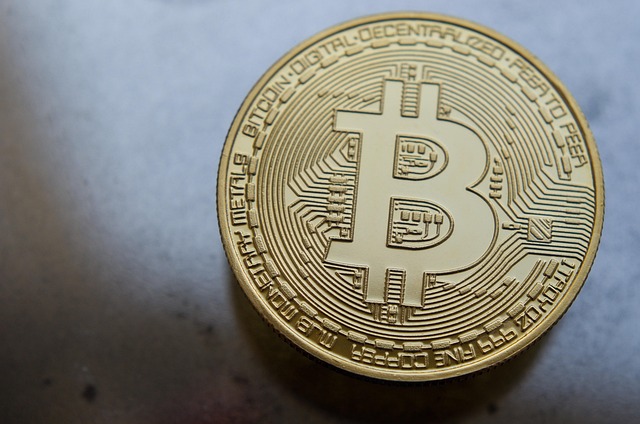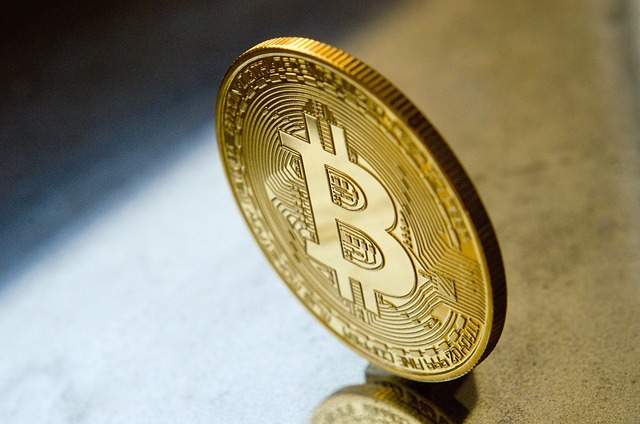Trading Fee Binance Futures Explained
Author: Jameson Richman Expert
Published On: 2025-09-25
Prepared by Jameson Richman and our team of experts with over a decade of experience in cryptocurrency and digital asset analysis. Learn more about us.
Understanding trading fees on Binance Futures is a fundamental component of developing a profitable and sustainable trading strategy. These fees, which are deducted either when opening or closing positions, directly influence your overall returns—especially critical for high-frequency traders, scalpers, and those utilizing leverage to amplify gains. As one of the largest and most reputable cryptocurrency derivatives platforms globally, Binance Futures offers a multi-layered, highly transparent fee structure designed to cater to a broad spectrum of traders—from retail enthusiasts to institutional investors. This comprehensive guide delves into the intricate mechanics of Binance Futures trading fees, including detailed calculation methods, the various factors that influence them, and advanced techniques to optimize and minimize trading costs. Mastering this knowledge enables traders to enhance net profits, scale operations efficiently, and maintain a competitive edge in the volatile crypto markets.

Introduction to Binance Futures Trading Fees
Trading fees on Binance Futures are more than just operational costs—they are a crucial element of strategic financial planning. Effective fee management can lead to substantial improvements in overall profitability, especially in markets characterized by razor-thin margins, rapid price movements, and high trading volumes. These fees are deducted from your account balance at the moment you open or close a position, regardless of whether the trade results in profit or loss. Binance’s fee model is designed to promote liquidity provision and high trading activity through a tiered discount system that favors market makers over takers. The platform’s transparent structure is flexible enough to accommodate traders at all levels—from casual retail users to large institutional entities—while offering additional benefits for Binance Coin (BNB) holders and high-volume traders. Gaining a detailed understanding of these fee mechanisms is essential to optimize trade execution, reduce costs, and maximize net gains over time.
How Binance Futures Fee Structure Works
Binance Futures employs a sophisticated maker-taker fee model, a standard in the cryptocurrency derivatives industry, designed to incentivize liquidity provision and efficient trading. This model primarily classifies orders into two categories:
- Maker Orders: These are limit orders placed outside the current market price, which do not execute immediately but add depth to the order book. Makers earn the advantage of lower fees—starting as low as 0.02%—and in higher tiers, can enjoy zero fees, fostering a robust liquidity environment. This incentivization leads to narrower spreads and more efficient trade executions for all participants.
- Taker Orders: These include market orders or limit orders that fill immediately against existing orders, removing liquidity from the book. Takers pay higher fees—initially around 0.04%—but these rates decrease as traders climb the fee tiers through sustained high-volume trading or VIP status. The tiered structure aligns incentives to reward active traders who contribute to market depth while discouraging order book depletion through high taker fees.
Binance’s fee tiers are dynamically adjusted based on your recent 30-day trading volume and BNB holdings. Higher trading volumes or larger BNB balances unlock progressively lower fee rates, sometimes approaching zero—particularly for top-tier VIP traders. This structure promotes liquidity, encourages high trading activity, and incentivizes the use of Binance’s native token, BNB, for fee payments—offering additional discounts that can lead to significant savings over time.
Factors Influencing Trading Fees on Binance Futures
Multiple variables influence the exact trading fees that apply to your account, and understanding these factors allows traders to implement strategic cost-saving measures:
- Trading Volume (30-Day Rolling Total): The most significant determinant. As your cumulative trading volume surpasses milestones such as $50 million, $500 million, or $1 billion, you qualify for lower fee tiers. For example, top-tier traders can enjoy maker fees approaching 0% and markedly reduced taker fees, dramatically decreasing overall trading costs during sustained high-volume activity.
- BNB Holdings and Fee Payment Method: Holding Binance Coin (BNB) and opting to pay trading fees with BNB typically yields a 25% discount. This strategic choice, compounded over many trades, can lead to substantial long-term savings, especially for active traders executing multiple trades daily.
- VIP and Tier Status: Binance offers VIP tiers (VIP 0 to VIP 9) based on your recent 30-day volume and BNB holdings. Higher VIP levels unlock additional benefits: deeper fee discounts, dedicated support, exclusive promotions, and sometimes early access to new features. Achieving higher VIP status is a key tactic for institutional traders or those with high-volume activity.
- Promotional Campaigns and Temporary Reductions: Binance periodically launches special events—such as fee rebates, reduced spreads, or limited-time discounts—particularly during periods of heightened market volatility or trading volume surges. Staying informed and participating during these campaigns can lead to immediate cost reductions.
By understanding how these variables interact, traders can strategically time their trades, leverage fee discounts, and select order types that reduce overall costs, thereby maximizing profitability and competitive advantage.

Strategies to Minimize Trading Fees
Long-term trading success on Binance Futures depends heavily on meticulous fee management. Here are advanced, data-driven techniques to effectively lower trading costs:
- Use BNB for Fee Payments: Always select BNB as your fee currency. This choice applies an automatic discount—often around 25%—which compounds across multiple trades, significantly reducing costs over time. For high-frequency traders, this strategy can result in substantial annual savings.
- Increase Trading Volume or BNB Holdings to Reach Higher VIP Tiers: Focus on scaling your trading volume or accumulating BNB to qualify for VIP tiers with lower fee rates. The incremental reductions can amount to thousands of dollars saved annually, especially relevant for professional or institutional traders.
- Prioritize Maker Orders (Limit Orders): Using limit orders to act as a market maker typically yields lower fees compared to market orders. Additionally, placing limit orders at strategic price levels can help reduce slippage, especially during volatile periods, further minimizing trading costs and improving execution quality.
- Participate in Promotional Campaigns: Regularly monitor Binance’s promotional calendar for fee rebates, reduced trading pairs, or seasonal discounts. Participating in these events can lead to immediate savings, boosting net returns.
- Trade During High Liquidity Periods: Execute trades when market liquidity is at its peak. During these periods, spreads narrow, and limit orders are more likely to fill at favorable prices, reducing slippage and associated costs.
- Leverage Automated Trading Bots and Algorithms: Deploy trading bots that prioritize limit order placement and dynamically adjust orders based on market conditions. These tools can optimize trade timing, minimize manual errors, and capitalize on fee discounts effectively.
Integrating these strategies with vigilant monitoring of Binance’s fee schedule, ongoing promotions, and market conditions enables traders to substantially lower trading expenses—ultimately enhancing net profitability and long-term sustainability.
Comparing Binance Futures Fees with Other Platforms
While Binance Futures is renowned for its competitive fee structure, comparing it with other leading derivatives platforms can help traders choose the most cost-effective environment. Here’s a detailed comparison:
- MEXC: Features tiered fee discounts, referral programs, and periodic promotional reductions. Its fee structure closely mirrors Binance’s but often includes unique perks like token incentives, trading contests, or exclusive events that provide additional value for active traders.
- Bitget: Implements a tiered fee system with added benefits for copy trading, partnership programs, and liquidity providers. Frequent promotional events, including fee rebates and reduced spreads, make it attractive for cost-conscious traders seeking innovative features.
- Bybit: Offers a zero-slope maker fee at higher tiers and competitive taker rates. Regular campaigns and trading competitions provide fee discounts for new and high-volume traders, with a straightforward fee structure that emphasizes simplicity and transparency.
When selecting a platform, consider your trading pairs, typical trading volume, available promotions, and fee schedule. Using platform-specific fee calculators and reviewing recent fee updates ensures you optimize costs tailored to your trading style and objectives.
Referral Programs and Their Benefits
Referral programs are an effective way to offset trading expenses and generate additional income streams. By sharing your referral link, you can earn commissions or fee discounts for trades executed by your referred traders. Key benefits include:
- Binance Referral Program: Offers tiered rewards—such as a percentage of the trading fees generated by your referrals—which can be compounded with your own fee discounts. Active referrals can significantly reduce or eliminate your trading costs, especially if they become high-volume traders.
- MEXC and Bitget: Provide attractive affiliate incentives, including revenue sharing, bonuses, or performance-based escalations. These programs often include tools and dashboards to track earnings and optimize referral performance.
Maximize referral benefits by integrating them into your broader trading strategy. Use referral bonuses to subsidize trading costs, build a network of active traders, and leverage ongoing promotions. Combining referral income with fee optimization strategies can significantly enhance your overall trading profitability.

Conclusion
Mastering Binance Futures’ fee structure is essential for traders aiming to maximize net profitability and ensure long-term success. Its tiered, discount-driven system, combined with promotional campaigns and fee payment options like BNB, creates a highly competitive environment suitable for a broad range of traders—from retail to institutional. Regularly reviewing fee schedules, leveraging fee discounts, participating in promotional events, and optimizing order types can lead to substantial cost reductions. Comparing platforms and utilizing referral programs further amplify your ability to maximize profit margins. Effective fee management transforms futures trading from a cost-intensive activity into a sustainable, profit-generating enterprise. Staying proactive, informed, and disciplined in fee optimization strategies guarantees a sustained competitive advantage in the fast-paced, ever-evolving crypto derivatives landscape.